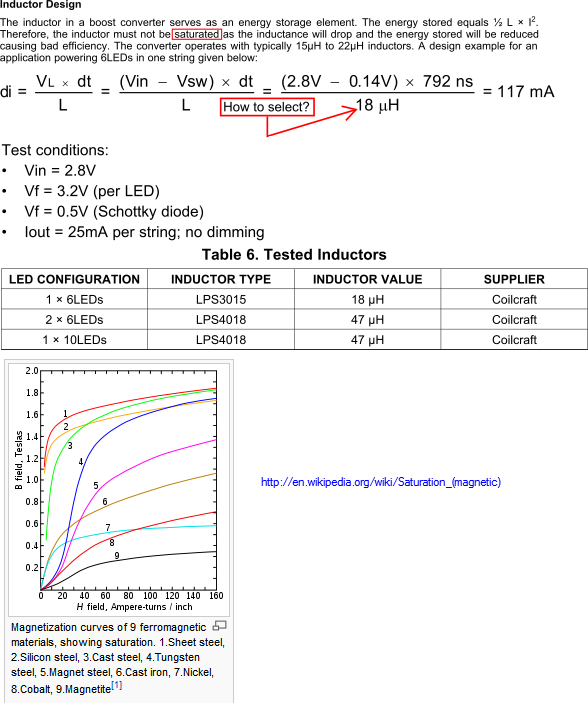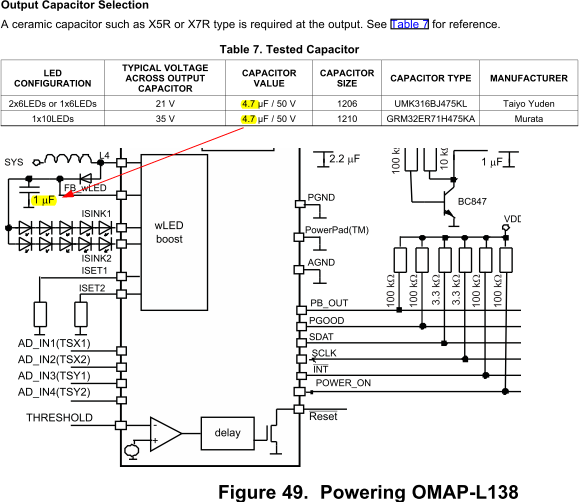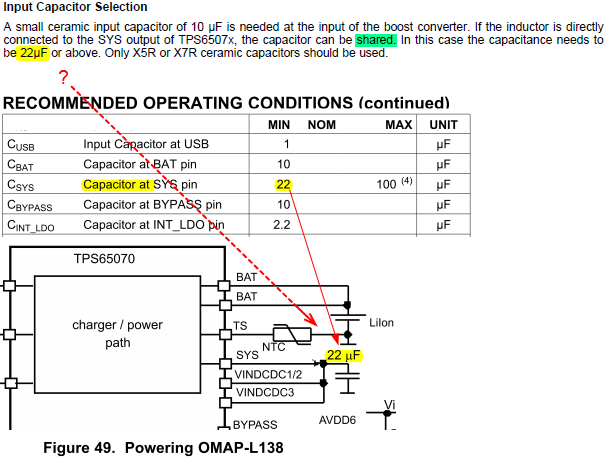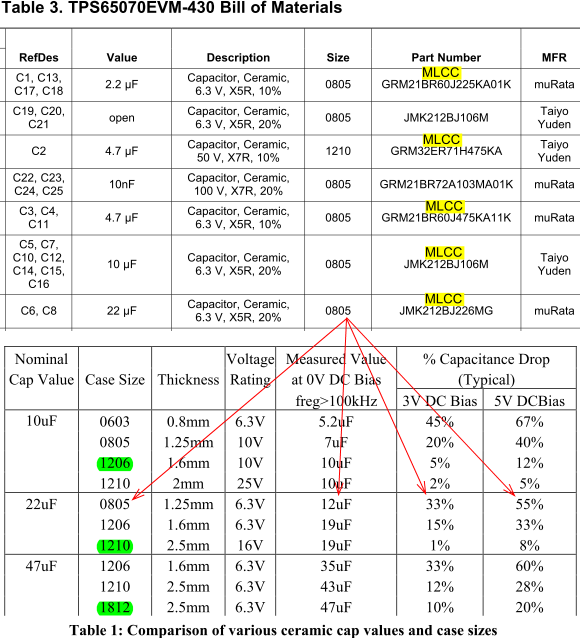Hi,
I would like to ask some questions with TPS6507X wLED boost converter design.
Inductance

In equation (15), p.65 of TPS6507x datasheet SLVS950C, L is substituted with value 18µH. How is it determined?
On page 64, in Inductor Design says that inductor must not be saturated. The physical principle of magnetization curve is like bottom of the above screenshot.
And that
H = 0.4πNI/L ∝ I
Does that mean if I have larger current, then inductor with larger inductance might be needed, and vice versa?
Output capacitor

Although on page 66 the two recommended output capacitor have 4.7µF capacitor, on page 71 Figure 49. Powering OMAP-L138, an output capacitor of 1µF is shown. Which should I follow?
Input capacitor

Page 66 suggest that a 22µF input capacitor might be shared when inductor is directly connected to SYS pin.
On page 3 Recommended Operating Conditions CSYS of minimum 22µF is recommended, which is also shown in Fig.49.
Does (1)'s inductor refer to the one in (2)?
Zheng

